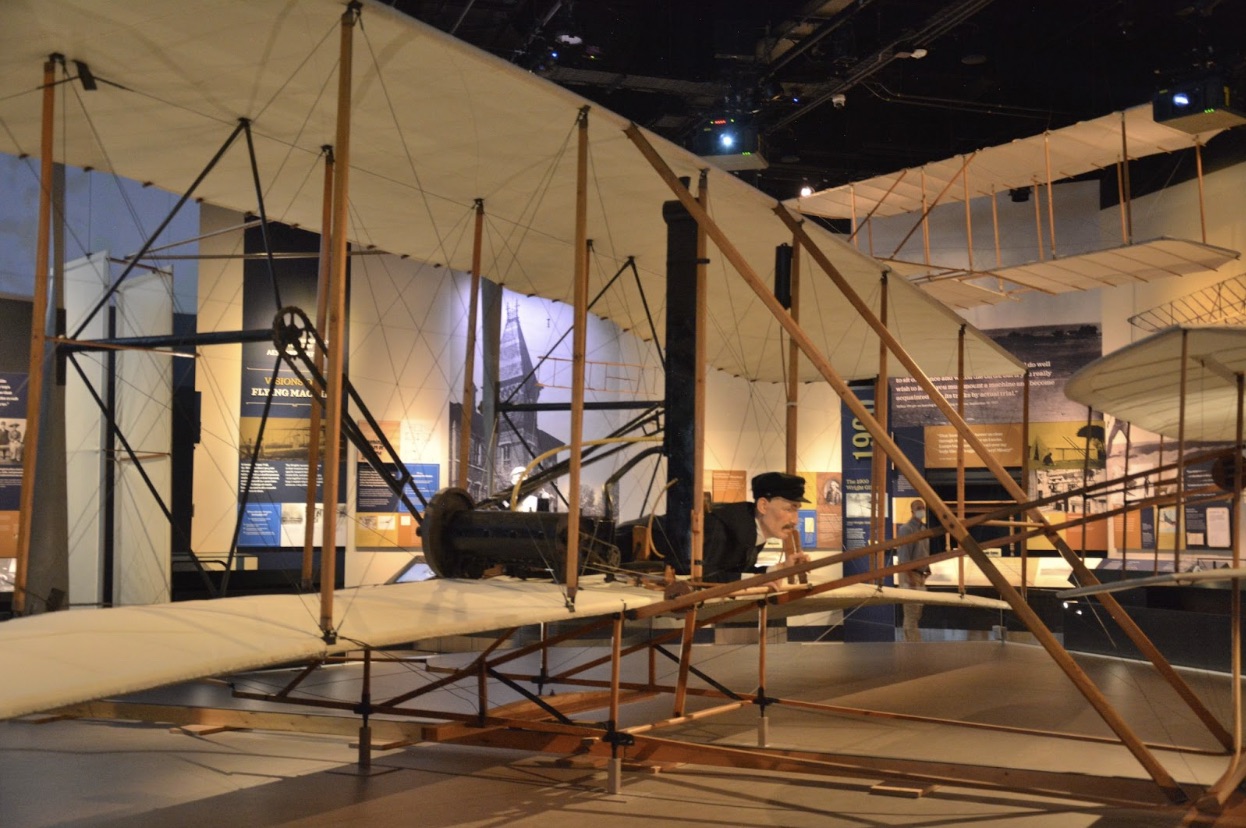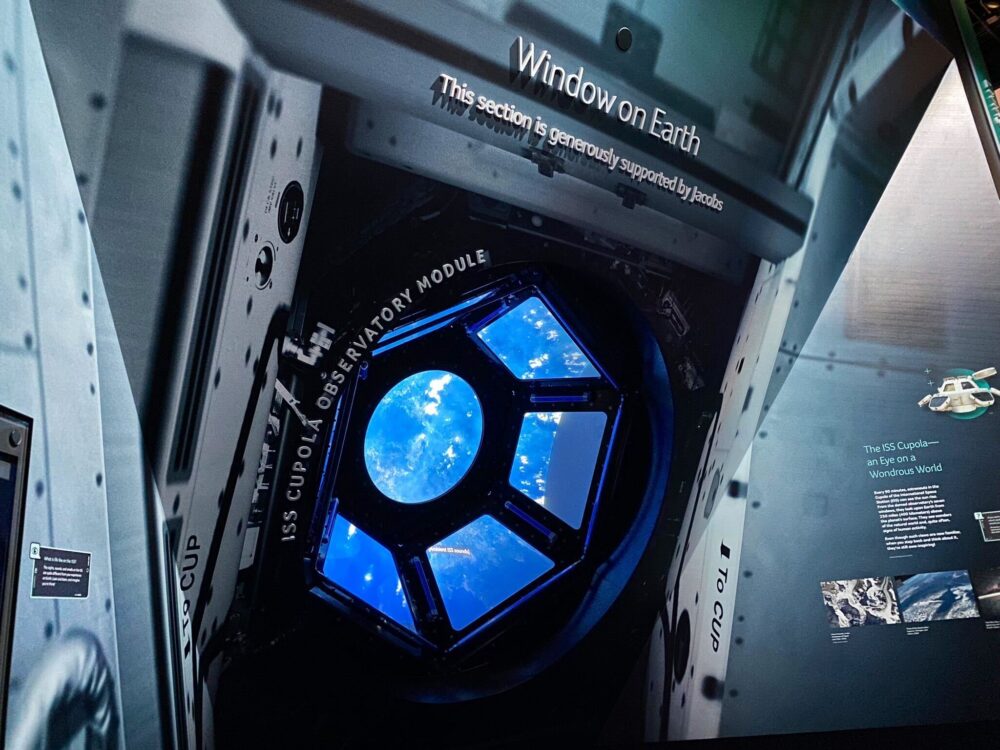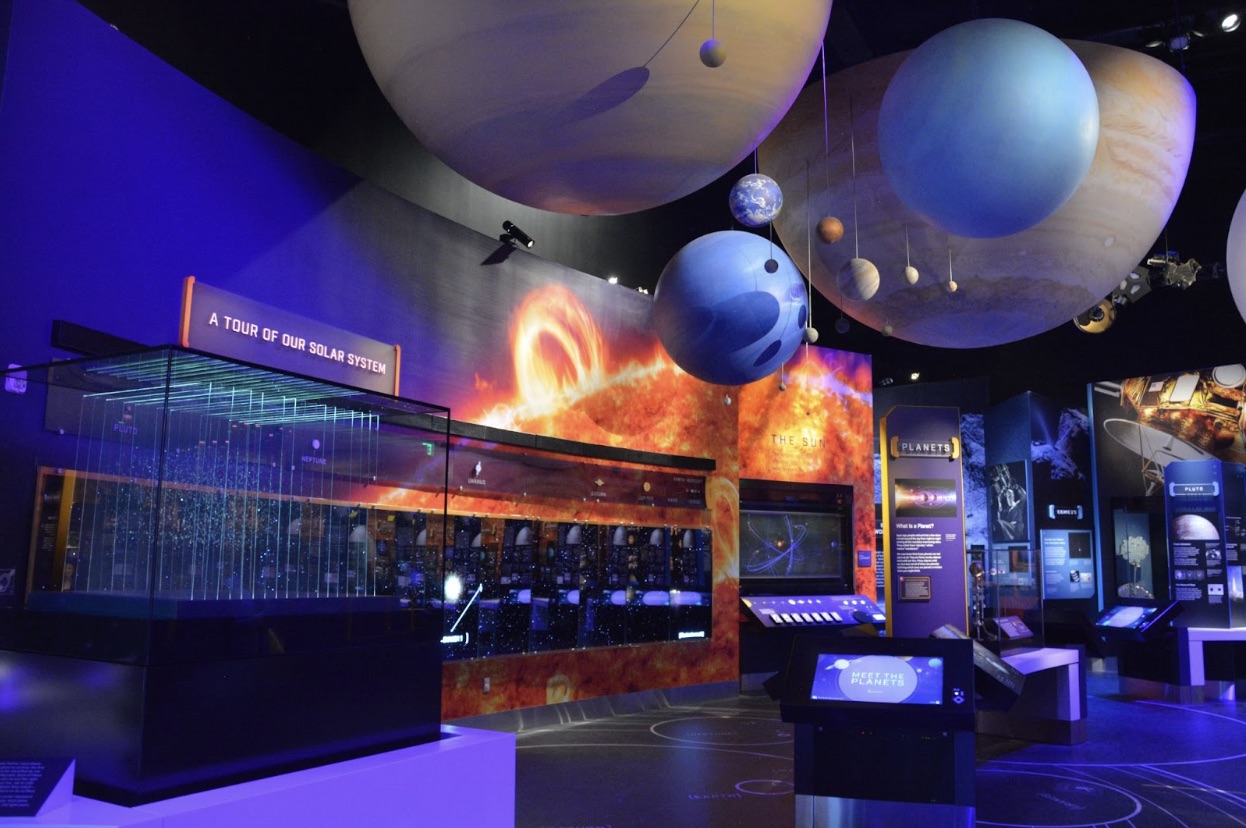WASHINGTON – The Smithsonian’s National Air and Space Museum will partially reopen to the public on Oct. 14, featuring eight new and renovated galleries along with the Albert Einstein Planetarium, and a new Mars Cafe.
The museum’s flagship location, on the National Mall, closed to the public in March as part of a seven-year major renovation that began in 2018. The massive project, projected to cost $900 million, includes redesigning all exhibitions, building family care rooms and classrooms, and completely refacing the stone exterior of the building.

At a media preview on Thursday, Christopher Browne, John and Adrienne Mars Director of the National Air and Space Museum, said the museum will be operating at roughly 50% capacity because the National Mall entrance will not reopen with the facility’s west wing.
“Even if the code said ‘sure, pack them in shoulder-to-shoulder’ we wouldn’t want to do that, because it would ruin the experience,” Browne said.
The museum will feature interactive and digital experiences, as well as hundreds of new artifacts, including the WR-3 air racer built by Neal Loving, the first African American certified to race airplanes, and a T-38 flown by Jackie Cochran, the first woman to break the sound barrier.

“Since the time the museum opened in 1976, a lot has changed,” Browne said. “The aviation and aerospace world has changed incredibly and who’s participating in it has changed. It’s become a much more diverse and inclusive space that we want to celebrate.”
Expansions of existing exhibits focused on making storytelling accessible and available to those with physical impairments, Browne said, through the introduction of tactile models and places to plug hearing-assistive devices into most interactive displays.
Exhibitions opening next week include “Destination Moon,” where visitors can stand face to face with Neil Armstrong’s A-7L lunar spacesuit from his first step onto the Moon. From the Apollo 11 mission, the exhibit also includes astronaut survival kits, tactile models of the F1 engines and Armstrong’s spacesuit gloves.

“Part of the benefit we have from being half to go is we’re going to learn. We want to hear from our visitors about what’s working… especially from folks who may not have mobility or vision or hearing,” Browne said.
In the Kenneth C. Griffin Exploring the Planets Gallery, visitors can simulate standing on the surface of other planets, surrounded by two immersive curved screens, and practice directing a rover across the surface of Mars.
“We are living right now in the golden age of planetary exploration, and this gallery is capturing it as best as possible,” said Dr. Robert A. Craddock, planetary geologist and the curator for the gallery, who has worked at the museum for 34 years. Ever since Craddock watched the Apollo 8 astronauts take off to the Moon on television, he’s been inspired to get involved in planetary science.
”Today we get more data from the planets than we did in the first fifteen years of space exploration. We are trying to capture that and bring it to the American public,” Craddock said.
The gallery features a unique collection of artifacts that represent different planets and the phases of the history of human planetary exploration, as well as a tour of the solar system.

One of the museum’s longtime centerpieces, the original 1903 Wright Flyer, has been moved to a dynamic new exhibit, “Wright Brothers & the Invention of the Aerial Age,” featuring touch screens allowing visitors to take a zoomed-in, 360-degree view of the delicate mechanics Wilbur and Orville Wright used to take flight.
“Every airplane that flies embodies this one. Every airplane that you fly on is essentially a Wright Flyer,” Peter Jakab, former chief curator of the museum, told Capital News Service. “(Visitors) have a few minutes to come here, engage with this object, and really think about how the world we live in today, in a large measure, stems from this object.”
Renovations have placed iconic artifacts in new settings to celebrate their impact on history, Browne said. But the museum also strives to be a place of learning, gathering new artifacts to highlight the stories, like Cochran’s, that allow visitors to connect at a personal level.
The museum is holding weekly meetings to tackle the issue of how to present new discoveries to the public.
“Any given day there are probably over a dozen different new discoveries that we are discussing…It’s a firehose, basically,” Craddock said.
“We are trying to inspire everybody, to show that everybody has an opportunity to be involved with aviation or space exploration,” he added.
The west end of the Air and Space Museum will be open to the public from 10 a.m. to 5:30 p.m. every day except for Christmas Day starting Oct. 14. Visitors can reserve free, timed-entry passes on the museum’s website.


You must be logged in to post a comment.